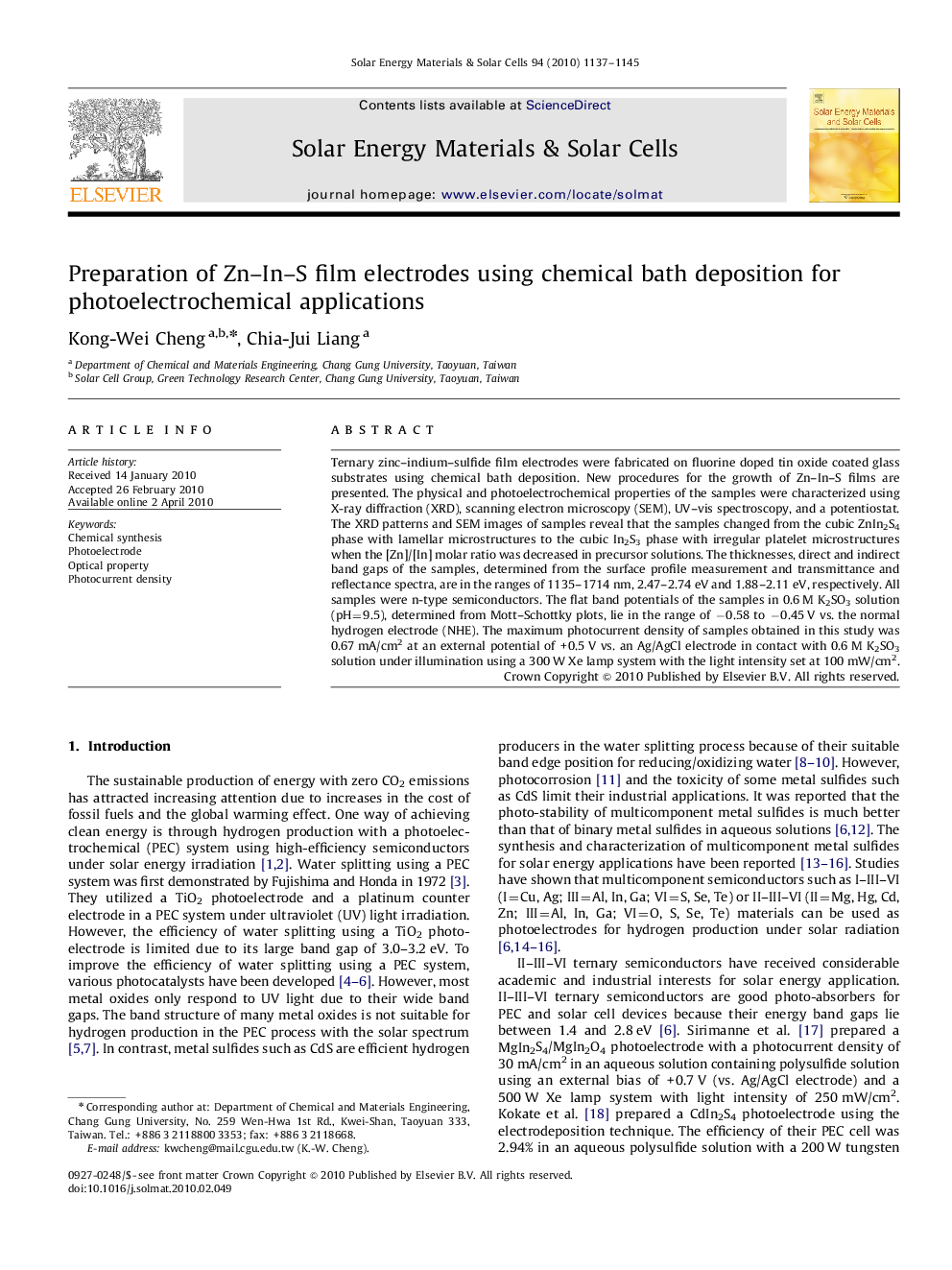| Article ID | Journal | Published Year | Pages | File Type |
|---|---|---|---|---|
| 80148 | Solar Energy Materials and Solar Cells | 2010 | 9 Pages |
Ternary zinc–indium–sulfide film electrodes were fabricated on fluorine doped tin oxide coated glass substrates using chemical bath deposition. New procedures for the growth of Zn–In–S films are presented. The physical and photoelectrochemical properties of the samples were characterized using X-ray diffraction (XRD), scanning electron microscopy (SEM), UV–vis spectroscopy, and a potentiostat. The XRD patterns and SEM images of samples reveal that the samples changed from the cubic ZnIn2S4 phase with lamellar microstructures to the cubic In2S3 phase with irregular platelet microstructures when the [Zn]/[In] molar ratio was decreased in precursor solutions. The thicknesses, direct and indirect band gaps of the samples, determined from the surface profile measurement and transmittance and reflectance spectra, are in the ranges of 1135–1714 nm, 2.47–2.74 eV and 1.88–2.11 eV, respectively. All samples were n-type semiconductors. The flat band potentials of the samples in 0.6 M K2SO3 solution (pH=9.5), determined from Mott–Schottky plots, lie in the range of −0.58 to −0.45 V vs. the normal hydrogen electrode (NHE). The maximum photocurrent density of samples obtained in this study was 0.67 mA/cm2 at an external potential of +0.5 V vs. an Ag/AgCl electrode in contact with 0.6 M K2SO3 solution under illumination using a 300 W Xe lamp system with the light intensity set at 100 mW/cm2.
